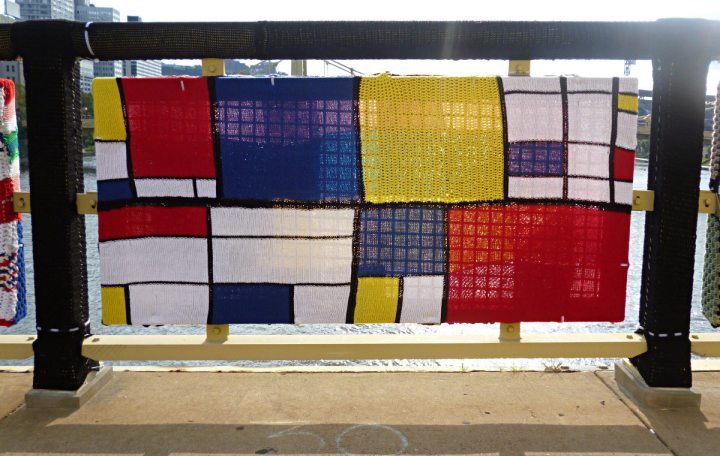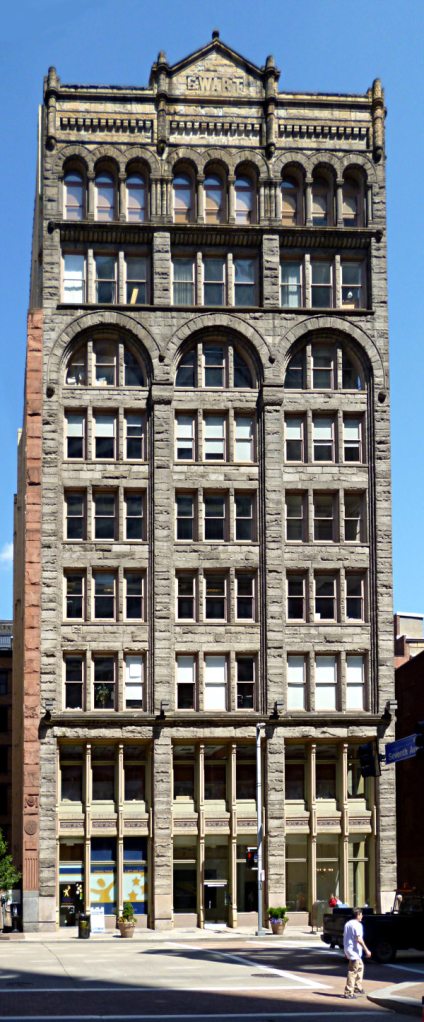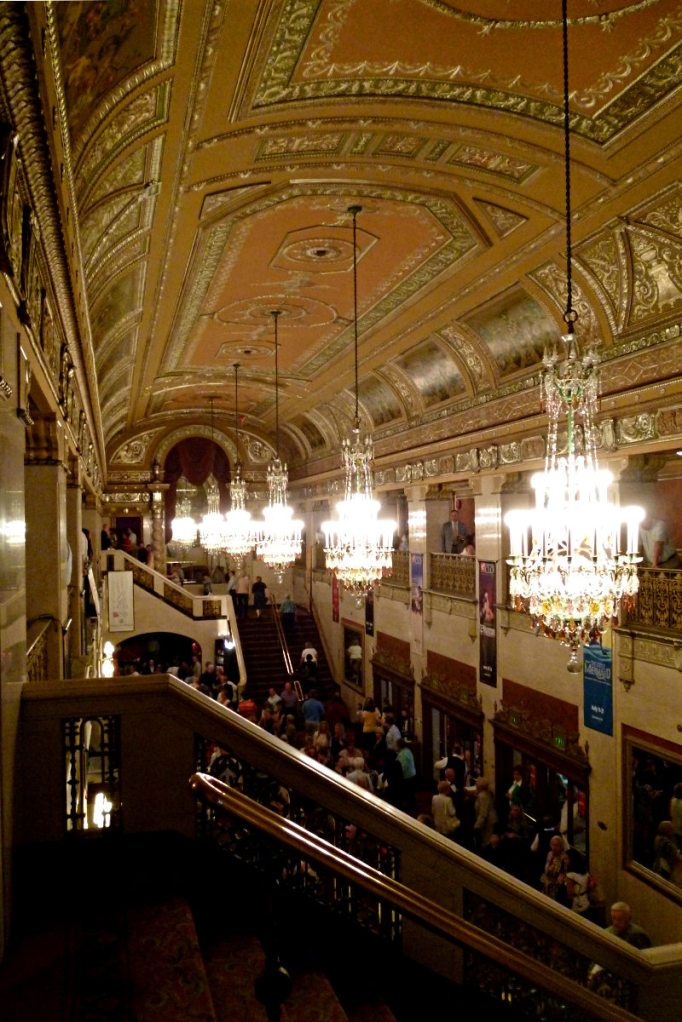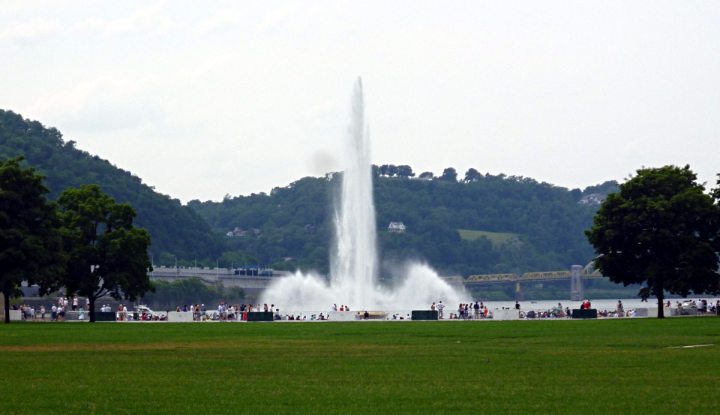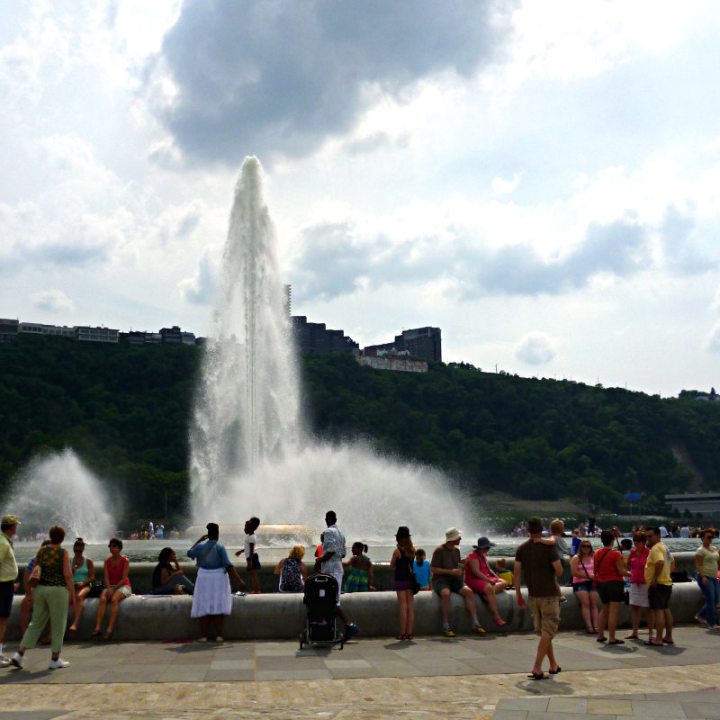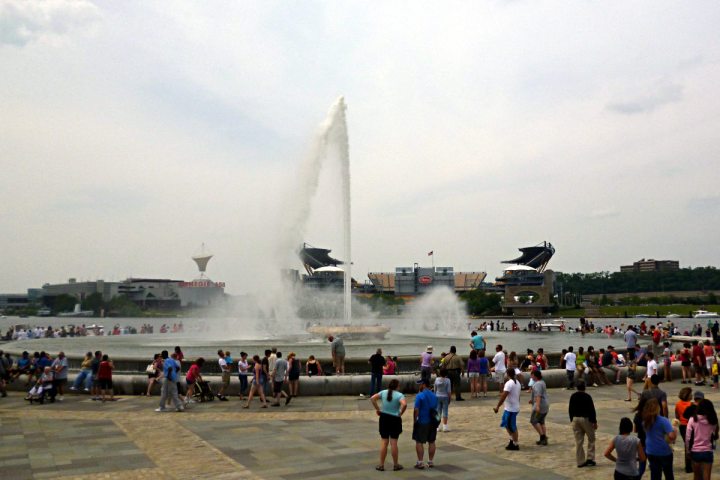The Fulton Building, with its enormous arch, has been turned into a luxury hotel right in the heart of the theater district. It is so much in the heart, in fact, that the entrance to the Byham Theater goes right through the Fulton Building, and the marquee is on the Sixth Street front of it. Many theater-goers probably never realize that, by the time they have navigated the long foyer and ended up in the real lobby of the theater, they have gone all the way through one building and ended up in another. That low brick building to the left of the Fulton Building is the theater itself—downtown’s oldest working theater, built in 1903 as the Gayety vaudeville house (originally with its entrance on the river side), and later known as the Fulton until the Byham family paid for a major renovation in 1996. Behind the theater is the CNG Tower, a landmark of 1980s postmodernist architecture that presents radically different views from different angles.
-
Fulton Building and Byham Theater
-
Yarn-Bombing the Andy Warhol Bridge
The Seventh Street or Andy Warhol Bridge is covered with knitting—supposedly the biggest “yarn-bombing” project in history. If terrorism were always so cheerful, old Pa Pitt would be completely in favor of it.
As a secret fan of De Stijl, old Pa Pitt was particularly taken with this piece.
The “Knit the Bridge” project has generated quite a bit of news coverage across the country:
-
Ewart Building
The Ewart Building on Liberty Avenue was built in 1891, shortly after Richardson’s courthouse was finished—one of many Romanesque buildings that followed Richardson’s masterpiece in Pittsburgh.
-
Lobby of the Arrott Building
-
A New Tower Rises
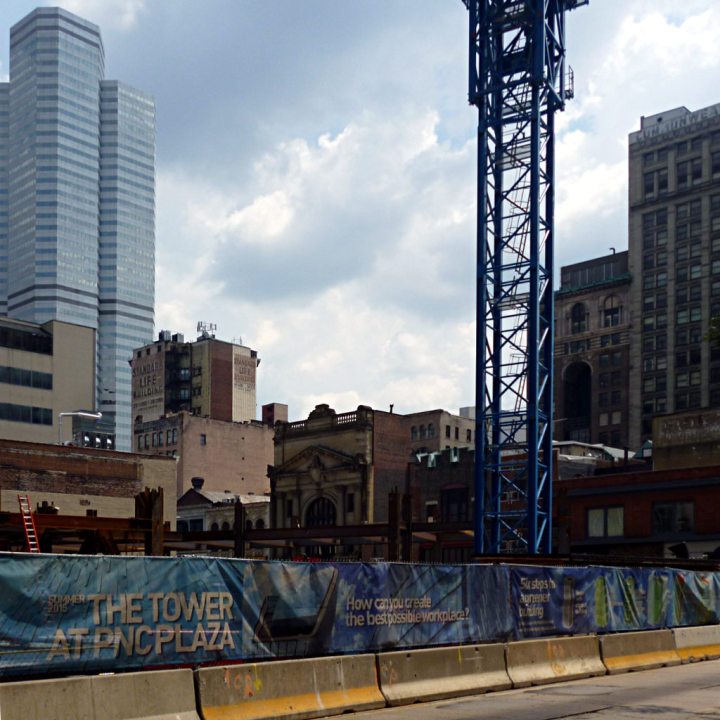
The Tower at PNC Plaza, the biggest skyscraper project in Pittsburgh since the 1980s, has just begun to rise at the corner of Fifth Avenue and Wood Street. Traditionally skyscrapers have grown in a doughnut-shaped area of the Golden Triangle, with the hole in the Fifth Avenue shopping district; but now that much of the shopping has moved elsewhere, the hole may begin to fill in.
-
Thirteen Stars, Thirteen Stripes
-
Firstside from Across the Mon
-
The Point Fountain Again
-
Lobby of the Benedum Center
The lobby of the Benedum Center for the Performing Arts, just before a show. Like Heinz Hall just down the street, the Benedum was built as a movie palace, but has been converted to a live theater—Pittsburgh’s largest and busiest. The Pittsburgh Opera, the Civic Light Opera, the Pittsburgh Ballet Theatre, and numerous traveling shows all share this magnificent venue.
-
The Point Fountain Is Back






